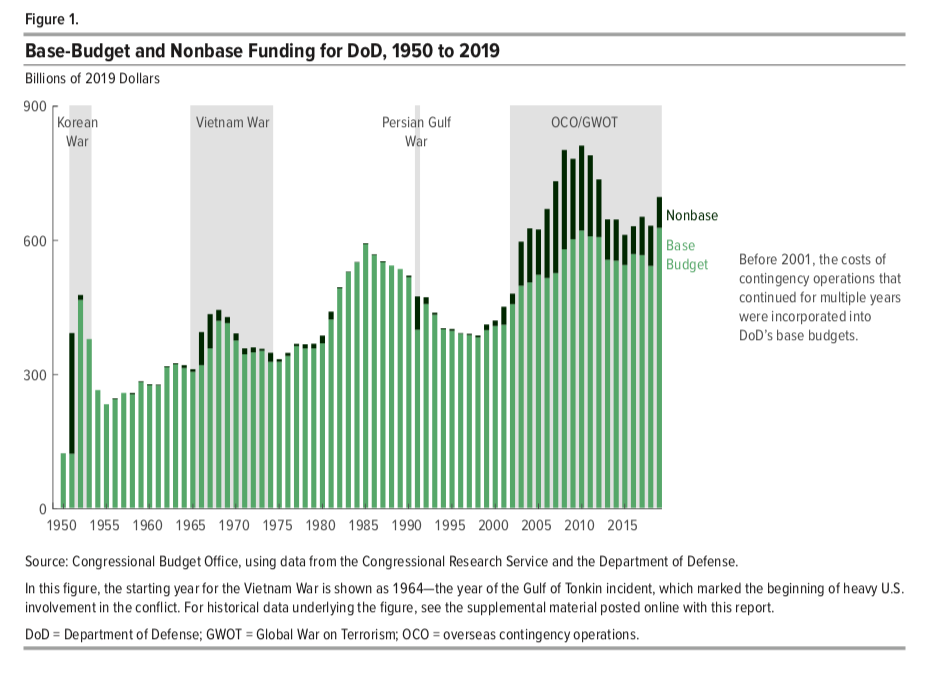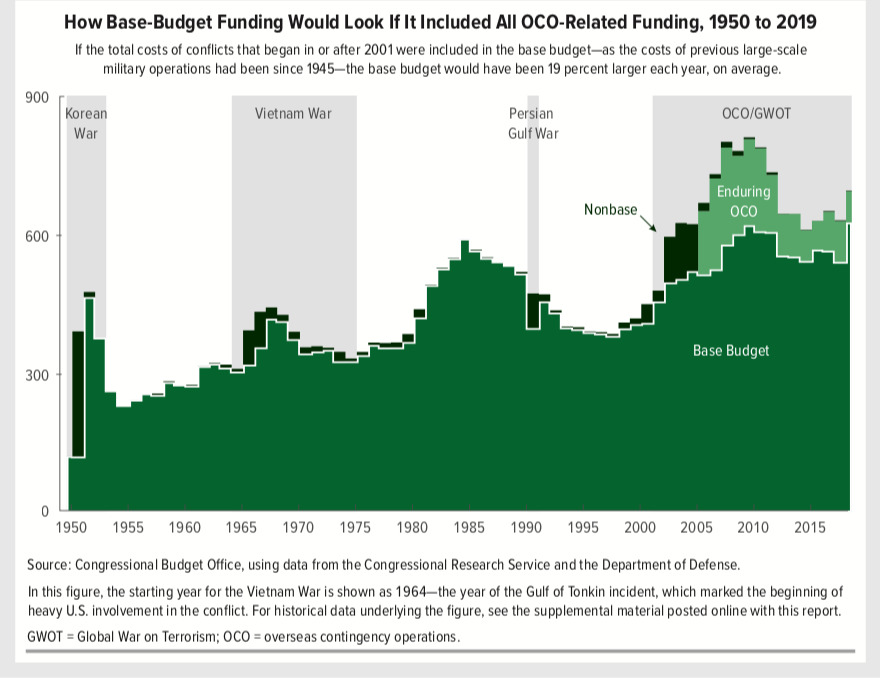The Congressional Budget Office (CBO) released a report this week on Department of Defense spending on overseas contingency operations(OCO) that provides insight into how it distorts America’s strategic choices. OCO spending is non-base defense spending. Its original purpose was as an emergency supplemental to fund the War on Terror, yet it has continued to be used even as the war in Afghanistan turned 17 this month.
According to CBO, “non-base” spending since September 11 has followed a different pattern than previous eras. As the figure below shows, previous conflicts also used contingency funds. However, the use was temporary before the costs of a war could be incorporated into the base defense budget. Since 2001 though, CBO finds that an average of more than $50 billion (in 2019 dollars) of OCO spending each year has gone to enduring, rather than temporary, activities.
The use of an emergency supplemental after a security shock, such as a large-scale terrorist attack on U.S. soil, makes sense. The usefulness diminished though as the requirements of America’s post-September 11 wars became more predictable. However, it did provide some political advantages. In recent years, it became a convenient workaround for the Pentagon to avoid the budget caps imposed in the Budget Control Act of 2011 (BCA). War spending was exempt from the caps, so there was incentive to shift non-war spending to OCO.
The major problem with this practice is that it creates a distorted picture of future defense spending. As the CBO report notes:
A key disadvantage of excluding the cost of OCO activities from the base budget is that doing so creates an inaccurate picture of what future defense spending might be in the absence of military conflicts. As contingency operations have become the norm and [the Department of Defense (DoD)] has adjusted its allocation of resources to accommodate them, it has become increasing difficult to distinguish between the incremental costs of military conflicts and DoD’s regular, enduring costs.
CBO provides the following figure to show just how distorted the picture is due to the use of OCO over the past seventeen years:
More perniciously than its effect on Pentagon planning though, might be its political effect. “War funding” was exempt from the BCA for a reason. Failure to approve war funding is likely to prove politically unpalatable for legislators. While the unclassified summary of the National Defense Strategy released earlier this year emphasizes great power competition as the country’s top defense priority, the continued use of contingency funding for ongoing military operations with relatively predictable requirements distorts the choice between resourcing peripheral and core needs.
But strategy is about making choices. It links military means to political ends and determines priorities and resource needs. Doing so is difficult. Adversaries react and adjust to countermeasures. Domestic priorities sometimes overtake foreign policy concerns. Exogenous shocks occur. These factors lead to a budget cycle that includes large spikes and gradual drawdowns. The need to prioritize is the essence of strategy though. The distorted picture created by the use of contingency funding for enduring needs undermines that.

